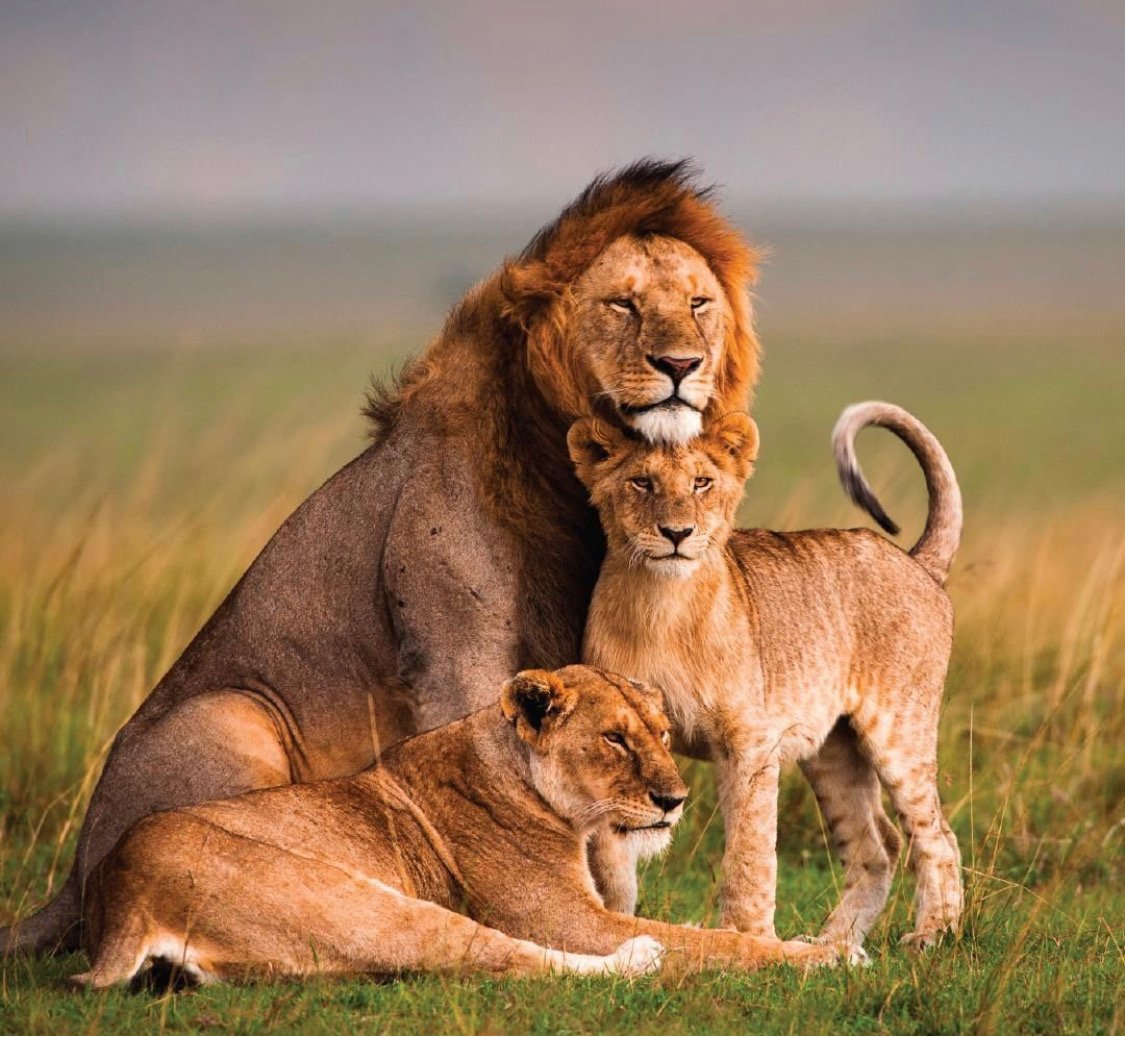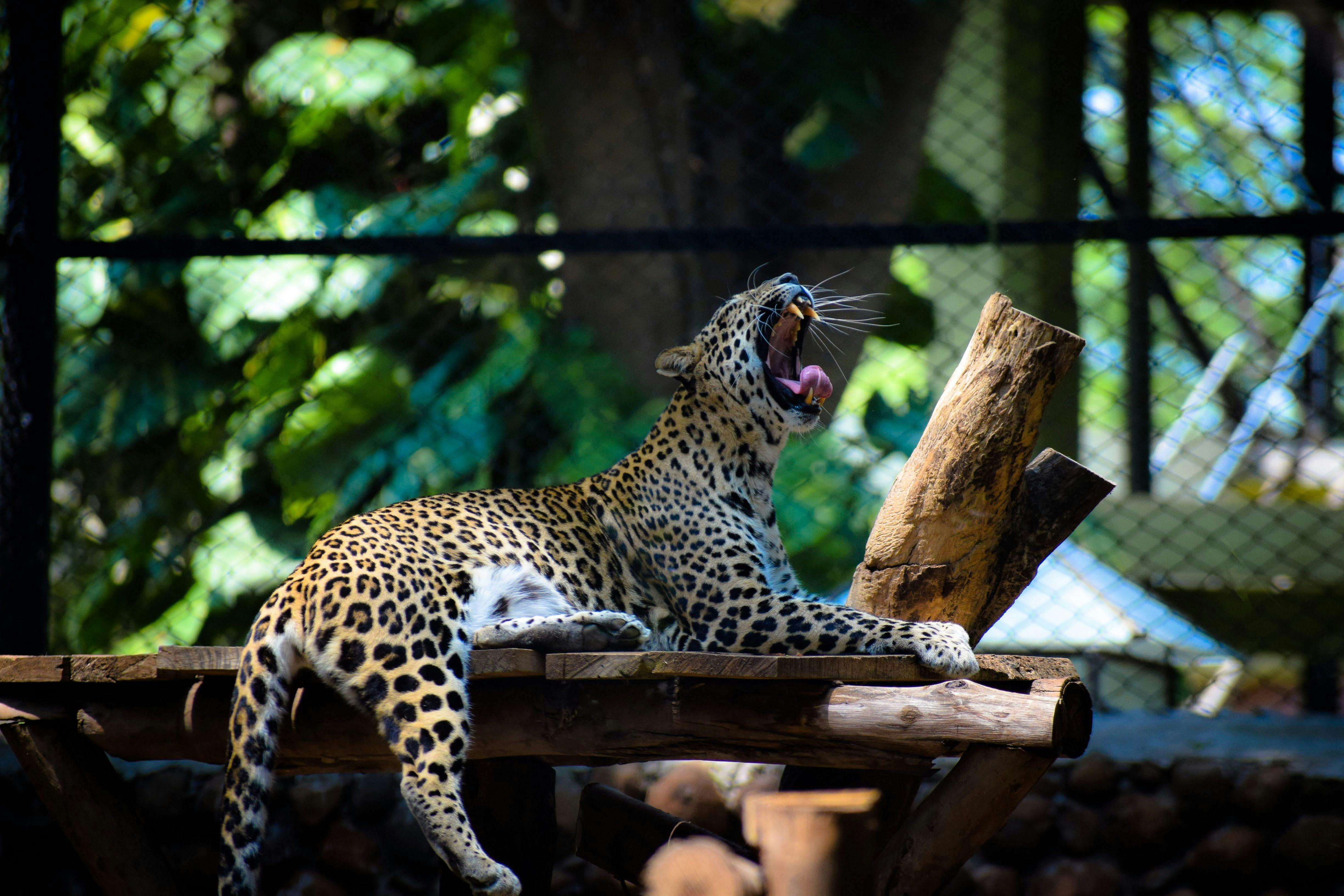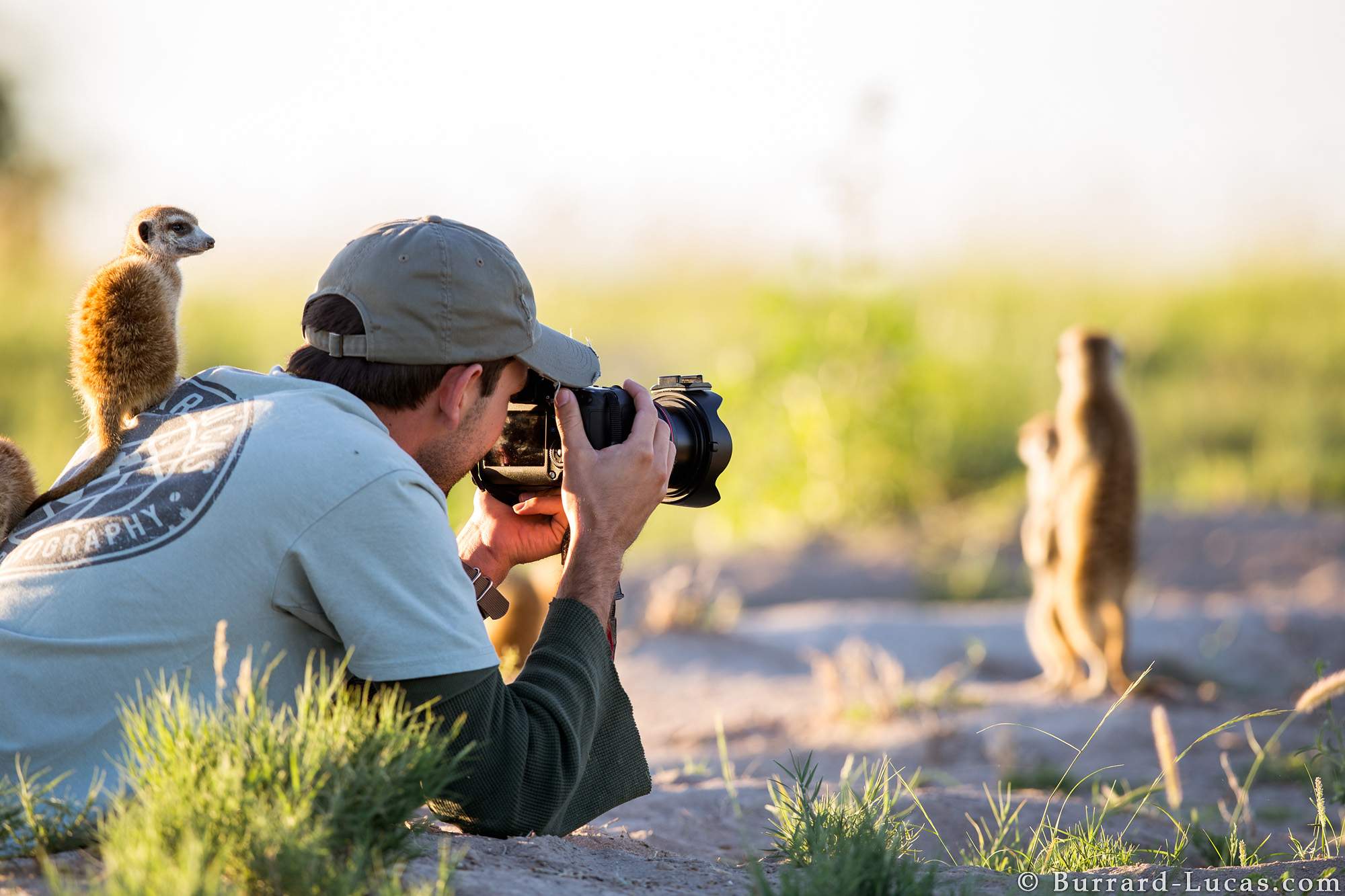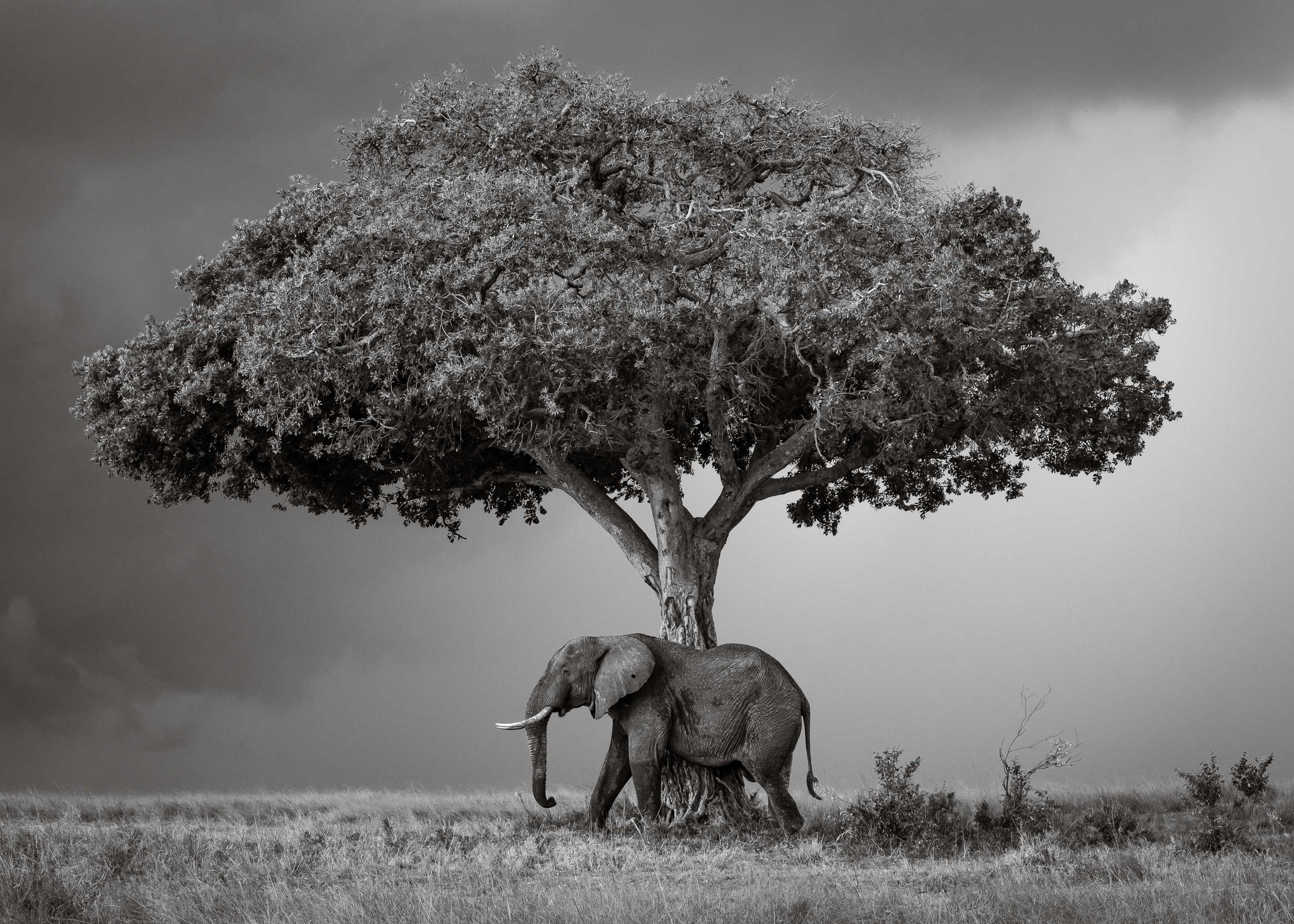19 Wildlife Photography Tips & Techniques

19 Wildlife Photography Tips
Wildlife photography deals with capturing wild animals in their natural environments. If you want to discover how to take wildlife shots properly and what should be taken into account while shooting, get acquainted with the following tips and techniques.
1. Learn More about the Animals You’re Shooting

The main challenge of wild animals photography is that you can’t control these creatures. The success of the shooting largely depends on their behavior and how well you can interpret it. So if you don’t want to miss captivating pictures, you should study animals. Organize a photoshoot only after you learn everything about the animals you are planning to photograph.
The most effective way to do that is to observe other wildlife photographers and nature enthusiasts. Pay attention to their movements near animals and try copying them during your own shoot. If you learn new things in practice and see how experienced people do it, you will get a hang of the process faster than with any book or guide.
- Check out 50 funny animal photobombs ever captured.
2. Practice Shooting More

In fact, plenty of animals, especially wild ones, are scared of people and tend to escape when you try to approach them. Don’t go straight to the forest when you want to take wild animal photographs. Firstly, start with taking pictures of pets or domestic animals around you to see how they behave and gain experience before dealing with animals that are more difficult to capture.
A nearby zoo is a wonderful place to improve your wildlife shooting skills. It isn’t as dangerous as in the forest since many animals are kept in cages or at a far distance from you. Moreover, at the zoo, you can encounter people who know a lot about wildlife and can share many interesting and important details about various animals with you.
3. Look for Good Locations

The most suitable place to begin photographing animals is a wildlife park. Usually, there is a list of animals that inhabit the park’s territory and a map that shows exact areas where you can encounter this or that animal and how to do it.
Here are the best locations for wildlife photography:
- Masai Mara National Reserve, Kenya
- Volcanoes National Park, Hawaii
- Pantanal, Brazil
- Denali National Park Preserve, Alaska
- Central Kalahari Game Reserve, Botswana
- Nantucket National Wildlife Refuge, United States
- Galapagos Islands, Ecuador
- The Amazon Basin, Brazil
- Jim Corbett National Park, India
- Skomer Island, Pembrokeshire, Wales
It may take a while to wait for animals so search for a safe place where you will feel comfortable lying down for a long time. As some animals may appear only at a certain period of time, get to the location before sunrise and don’t leave until sunset. In order to build a route map, use Google Maps.
4. Choose a Good Camera Gear

Not all types of cameras available on the market are fitting for taking wildlife shots. The best cameras for wildlife photography are mirrorless and SLR ones. The mid- and pro-level options are usually weather-resistant so they provide the possibility of manual setting-up and support various lenses.
For instance, SONY A77II is a conventional camera, but it is often exposed to destructive elements and won’t serve you for long. That’s why look for a weather-resistant model. Don’t hesitate to invest in additional protection as it ensures that the camera is capable of working stably even in harsh conditions.
Not every modern camera, e.g. NIKON D500 can successfully cope with photographing outside. Therefore, pay attention to the models with a manual mode. It will help you fully control a camera in cases when relying on automatic features isn’t the best way out.
If you have an interchangeable lens, it means that you may take close-up shots of insects or photograph large animals from a far distance.
5. Use the Right Telephoto Lens

The most popular wildlife photography lens is a telephoto one. It is necessary for shooting from a long distance. Some of these lenses boast optical stabilization (OS) for minimizing shake because of the extreme magnification, but they aren’t so cheap.
If you are a novice shooter on a tight budget, a plastic one will do perfectly. Plastic lenses don’t have OS but you may provide stability for them with the help of a tripod and set the high shutter speed to reduce blurring.
Also, think of investing in a telephoto zoom lens for a more flexible shooting process. An 18mm-300mm lens, for instance, NIKON AF-S NIKKOR 18-300MM doesn’t cost that much and is capable of photographing from both long and close distances. If you take a deeper look, you may even come across models with optical stabilization.
In case your aim is to find a telephoto lens with a fixed focal length and without powerful zooming, an optimal variant is a 100mm one like SIGMA 120-300MM. In fact, the best beginner wildlife photography lenses are those from old film cameras as they boast qualitative glass, are reliable and reasonably priced.
To properly capture insects and other tiny creatures, a macro lens for close-up shots is a must. I recommend you to pay attention to 100mm lenses with a maximum aperture of at least f/2.8. They perfectly cope with macro photography tasks.
You can also convert your regular lenses. You need extension tubes or an adaptor to attach lenses to the camera backwards (reverse mounting). In case this option isn’t for you, try using a telephoto zoom lens for shooting at almost macro dimensions. Just zoom in on the subject from a large distance. It isn’t the greatest way to shoot macro but you may still achieve the desired effect.
- Learn more horse photography tips.
6. Protect Yourself and Your Gear

To begin with, wear a hat to protect your head in case it rains or the sunlight is too intense. A boonie hat is a wonderful option since it covers not just a face but a head as well. To protect yourself from annoying flying insects, purchase a hat with a mosquito net.
A big raincoat that covers your entire body, your bag and the camera will also come in handy. You may use it even as a small tent if it rains heavily.
In case the weather is cold, a warm jacket will be your lifesaver. Besides, it won’t hurt to purchase special photography gloves that free up a pointing finger when photographing.
Pack all the gear in a reliable, water-resistant camera backpack, for instance, Lowepro DryZone 200. Stick to the backpack options of muted colors that won’t distract animals while you are shooting. For more convenience, choose the model with many compartments for cameras, lenses, memory cards, batteries and additional space for medicine and clothing.
A rain cover like Altura Photo Professional Rain Cover for the camera and the lens is a must. Take it with you every time as it will provide protection not only from the rain but also from mud, dirt and other unpleasant elements found outside. Another efficient way to protect the camera body is by wrapping a shower cap around it or covering it with a transparent food-grade wrap.
7. Use a Sturdy Tripod

I highly suggest not buying the cheapest tripods for shooting if you take photography animals seriously. Legs made out of plastic are breakable and won’t be able to hold a bulky camera with a long lens. To ensure the stability and safety of the gear, invest in the carbon fiber or aluminum model.
Maybe it isn’t as affordable but you won’t have to worry about your camera and lens falling on the ground and possibly breaking. My personal recommendation is Manfrotto MT190XPRO4 tripod.
Search for a tripod with multi-angle legs since you will need to place a tripod on an uneven surface. After you have adjusted the legs, ensure that they are securely locked in whatever position they are. How to check whether the camera angle is straight or not? The bubble in the spirit level, which is the green cylinder or circle located typically on the tripod head, is supposed to stay in the middle. ProMaster Professional XC525C is an excellent option.
The tripod head is a no less important element. For photographing wildlife, many professionals suggest using a gimbal head or a ball head. In case you photograph with a not so bulky medium telephoto lens, choose a ball head due to its smooth roll and simple adjustment process. Long and large telephoto models call for a gimbal head to provide the balance for a lens when you are holding the camera.
- Check out 50 forest photography tips.
8. Set Up ISO

One of the most important wildlife photography tips when it comes to camera settings is to pick the ISO value attentively. I suggest setting a low ISO like 100 or 200 to reduce the noise in frames.
In low light conditions, it is possible to select a higher ISO value but it shouldn’t influence the picture quality. The choice of the camera matters a lot; however, ISO 800 will be a suitable value for shooting in insufficient lighting and won’t produce excessive noise.
9. Remember that Shutter Speed Is Important

For active animals that are practically always in motion, set the fast shutter speed to prevent motion blur. Besides, it lets you take a wild animal photograph quicker and not miss an important moment.
As for slower animals, a shutter speed of 1/1000 sec. will work out perfectly. If you need to photograph birds that typically move and fly at high speeds, pick a value of 1/2000 sec. or higher.
10. Set The Focus Settings


If you want to get great pictures, you must know what focus to set up for different situations. Choose continuous focus if you need to photograph moving animals. It allows you to accurately track objects and avoid blurry pictures.
But you must be careful if you take pictures from a long distance. In this case, autofocus may choose the wrong focus point such as leaves, snowflakes or other animals. I recommend using manual focus to direct your lens where you need and avoid such problems.
- Check out the best macro photography ideas.
11. Keep a Low Profile

When photographing animals, you must remember that any noise or sudden movement can scare them. So you should be quiet and calm while taking wild animal photographs. You should approach them when they do not look in your direction making careful slow movements. When you are in the right place, point your camera and press the shutter.
Take into account that even the quietest shutter creates noise that animals can easily hear. The silent shutter function is perfect for wildlife photography, so use it if is available in your camera. Perhaps the burst mode seems to be a good option, but for this photography genre, it is not always suitable. If you photograph moving animals, then you can safely use it. The shutter noise will not attract their attention or scare them.
12. Apply Rules of Composition

The rule of thirds is also relevant for wild animals photography. Dividing your frame using an imaginary grid, you must position your object at one of the intersections. In this way, you get a well-balanced picture. If it’s hard for you to create a perfect composition without real lines, you can activate the grid on your camera’s display.
If you leave little room for your subject’s head, your images will not look so attractive. Imagine you are photographing an animal that looks to the right. Change the frame of your picture by moving it in the desired direction. The animal should have enough space for movement. Otherwise, the wild photograph will seem unnatural and even a little claustrophobic.
I also recommend capturing some part of the environment. It is always beautiful and can add a special charm to your images. Let your viewers see where the animals live.
- Learn more bird photography tips for beginners.
13. Try Dramatic Lighting

When photographing wildlife animals, you should definitely experiment with lighting. For example, I often use rim lighting or backlight to get unique pictures. You can also get interesting portrait shots using side lighting. Try experimenting with silhouettes to get a different look. Sunset, sunrise, moonlight, moody, or a cloudy sky can be part of dramatic lighting.
14. Remember about Minimalistic Classics

The minimalistic approach is one of the most winning wildlife photography techniques. I prefer to use water or snow to achieve the desired result. You can also use other similar backgrounds, such as green grass. The essence of this technique is to divert the viewer's attention from the scene and directing the look at the main object.
- View more dog photography tips.
15. Try Black & White or Monochromatic

Monochrome and b&w images are very popular among animal shooters. If you are going to take a wild animal photograph, but there are too many distracting things in the scene or the background is very busy, a monochrome shot is what you need. In this way, a viewer's eyes are directed to the main subject of the image. Moreover, black and white shots have a classic timeless look.
16. Shoot High-Key

I am a big fan of high-key photography. I believe that thanks to this method you can achieve incredible results in the wildlife photography industry especially if you know how to choose the right subjects for shooting. In this case, you do not use highlights, but perfectly combine your subject with the background.
Polar bears, zebras, some white birds such as egrets can be excellent high-key subjects. You can use almost any object of light or almost white tones.
17. Notice Patterns

To get brilliant pattern shots, you need to read a wildlife photography tutorial and practice a lot. It will take you some time to notice the pattern and show it in an appealing way in a photo.
To get the desired pattern, a wild animal photographer can capture several subjects by placing one odd object in a line according to the rule of thirds. Another option is photographing animals that already have some kind of pattern on the body. It can be leopards or giraffes. When photographing birds, you can get a full-frame shot of feather patterns if you zoom in close enough.
18. Pay Attention to Weather or Water Elements

To add a special atmosphere to your pictures, you can shoot in foggy, rainy, or snowy weather. Personally, I always try to find a subject that allows me to capture its hatred or love for rain or snow. When doing animal photography in rainy weather, I recommend choosing a longer lens that has a special hood to protect it from moisture. A plastic shower cap comes in handy if you are taking pictures with a wide-angle lens. You can easily put it on and take it off.
19. Follow Photographers: Rene Van der Schyff Facebook

Nick Nichols Facebook
He was awarded for his breathtaking shots many times. Nichols was born in 1952 and was drafted into the U.S. Army in the early 70s. He was assigned to the photographic unit.
He collaborated with National Geographic magazine and created 26 photography animals stories for them. In August 2013, the magazine published “The Short Happy Life of a Serengeti Lion” by Michael Nichols.

Nick Brandt Website
If you are a beginner conservation photographer, then Nick Brandt can be a great source of inspiration and an example to follow.

Cristina Mittermeier Website
Christina is the founder of the International League of Conservation Photographers (ILCP). It brings together shooters, who are active participants in the wildlife protection movement. Sea Legacy was founded in 2015.

Frans Lanting Website
He traveled around the world, visiting different corners of the planets from Antarctica to the Amazon. He captured wildlife as well as human influence on the environment.

Joel Sartore Website
He has been involved in this project for 25 years. He takes wild animal photographs to demonstrate the importance of preserving life on the planet. At the moment, this powerful archive contains photographs of 9,825 different species.

Charlie Hamilton James Website

Freebies for Editing Wildlife Photography
To make your wildlife photos look perfect, try using these free tools for image post processing.
Cool Light


This is the best and fastest ways of adjusting white balance on your wild animal photos. Just in several clicks you will make you photo clear and all objects will get their real colors.
Rich HDR


This preset is the best way to make you wildlife pictures look dramatic and accurate. Create a juicy and stylized effect in 2 minutes.
Sunny Day


If you photographed in manual mode on a bright day, this preset is the best way to manage bright light conditions.



